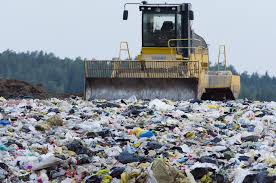
Breaking News
 $26M Frozen on Blockchain - With One Click
$26M Frozen on Blockchain - With One Click
 Italy are on national strike shutdown rejecting digital enslavement...
Italy are on national strike shutdown rejecting digital enslavement...
 The following U.S. states are currently using the rebranded "Reporty Homeland Security" so
The following U.S. states are currently using the rebranded "Reporty Homeland Security" so
 NATO Chief Urges Europe To Prepare For Long-Term World War With Russia, China, Iran & North Korea
NATO Chief Urges Europe To Prepare For Long-Term World War With Russia, China, Iran & North Korea
Top Tech News
 HUGE 32kWh LiFePO4 DIY Battery w/ 628Ah Cells! 90 Minute Build
HUGE 32kWh LiFePO4 DIY Battery w/ 628Ah Cells! 90 Minute Build
 What Has Bitcoin Become 17 Years After Satoshi Nakamoto Published The Whitepaper?
What Has Bitcoin Become 17 Years After Satoshi Nakamoto Published The Whitepaper?
 Japan just injected artificial blood into a human. No blood type needed. No refrigeration.
Japan just injected artificial blood into a human. No blood type needed. No refrigeration.
 The 6 Best LLM Tools To Run Models Locally
The 6 Best LLM Tools To Run Models Locally
 Testing My First Sodium-Ion Solar Battery
Testing My First Sodium-Ion Solar Battery
 A man once paralyzed from the waist down now stands on his own, not with machines or wires,...
A man once paralyzed from the waist down now stands on his own, not with machines or wires,...
 Review: Thumb-sized thermal camera turns your phone into a smart tool
Review: Thumb-sized thermal camera turns your phone into a smart tool
 Army To Bring Nuclear Microreactors To Its Bases By 2028
Army To Bring Nuclear Microreactors To Its Bases By 2028
 Nissan Says It's On Track For Solid-State Batteries That Double EV Range By 2028
Nissan Says It's On Track For Solid-State Batteries That Double EV Range By 2028
Technology extracts at least 2,000 liters of water per day from the atmosphere at a cost of less...

Jim Mason was first profiled in Reason in 2008 when his early attempts at homemade power generation ran afoul of regulators in his hometown of Berkeley, California. He fought through and created a business, All Power Labs, which turns trash into fuel.
In October, Mason and his crew were a core part of the Skysource/Skywater Alliance team that won a $1.5 million Water Abundance XPrize. Their gasification-powered prototype, called the WEDEW Watertainer, heats wood chips in a low-oxygen environment to generate gas that can be used to power an engine, providing the energy to extract at least 2,000 liters of water per day from the atmosphere at a cost of less than 2 cents per liter. This technology has the ability to produce cheap, drinkable water in areas far from modern plumbing or places where disaster has cut off normal water supplies—and to do it with a negative carbon footprint. Senior Editor Brian Doherty talked with Mason about the project in November.
Q: How was your gasification tech key to winning this XPrize dedicated to solving water supply problems?
A: Atmospheric water generation usually requires [cooling air] below the dew point, and then water vapor condenses out as drinkable water. This is energy intensive. [For the prize] they needed something on-demand—you turn it on and it makes power all day [without the battery arrays that solar would require]. Gasification fit, because with biodiesel, the cost of fuel is too high for the 2-cent-per-liter cost target, whereas using biomass residue from forest and agriculture is [close to] free.
A huge hassle with gasification is often drying water [out of the fuel biomass]. But water vapor is exactly what the Watertainer needs. A limitation of atmospheric water generation machines is they only work well in hot, tropical environments, in high humidity. The Watertainer creates an artificial atmosphere from this [extra water from the biomass] which widens the places where such machines can be efficient outside the tropical band.
The solid byproduct of gasification is biochar, and the type we make is essentially what's used for charcoal filters, so beyond making water, we're making material for final filtration of water.
Q: Does XPrize require a plan to take your water generation tech to market?
A: That's certainly what they want to happen. One of the prize sponsors is Tata, [an Indian corporation that among other things] does rural infrastructure development, and water access is a major issue in India. There isn't a formal thing where they said, "We will enable you to bring this to market," but I believe they [don't want this] dying as a press release. We have a commitment to get to market but lots of work ahead. Running a prototype to win a contest is different than [a device that will reliably] work in the world.
Q: Solar has gotten cheaper and more widespread since you got into power generation, so what is gasification's main advantage?
A: Unique to biomass fuel is that it helps solve the waste management problem. California has a huge problem with half the forest dead and, as a consequence, California is burning down. You can go cut and process [the dead trees] but there's no good economic incentive to do it. Taking them to a big biomass plant—the cost of transportation is more than the wood.
Our Watertainer is mobile. We can take it to where the wood is and process it. It is difficult getting through the regulatory issues to get self-made electricity into the grid. But with the water and the biochar we can create, you can go into a forest with a mobile shipping container on a trailer, process wood in situ, and turn it into two products with economic benefits you can carry back out of the forest. And biochar in soil has a multiplier effect on increased plant growth.

 Carbon based computers that run on iron
Carbon based computers that run on iron

